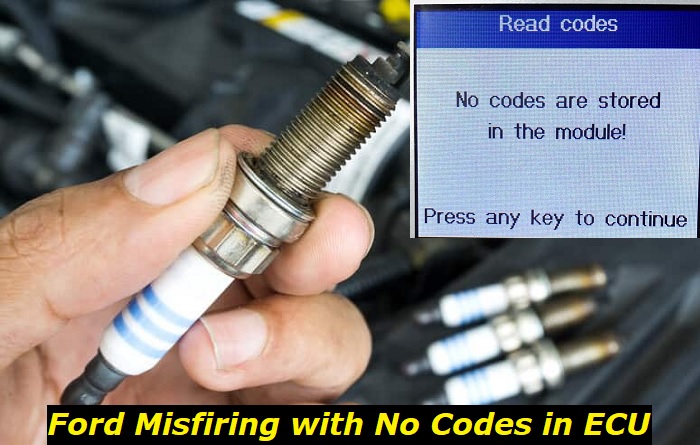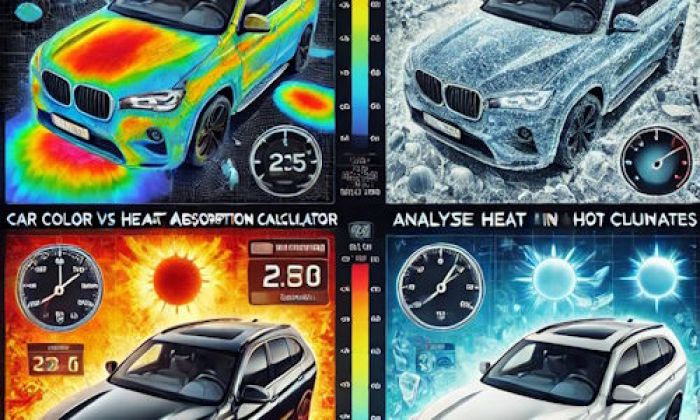Nowadays, our vehicles have become very reliant on their onboard computers. One of Ford cars' most crucial components is the engine management system (EMS). As its name says, it is the operating system of the engine.
Engine misfire highlights
- Level of importance:Medium
- Commonreasons:No spark, electrical problems, no fuel, low fuel pressure, injection issues, compression problems, internal engine damage
- DIY inspection:Possible but very complicated
- DIY repair:Impossible, in most cases
- Price for repair:$500 - $1,600
- Can you drive?Usually, yes
- Ways to fix:Locate the issue and let a professional mechanic fix it for you

Why You Should Know How to Diagnose the Issue
Time and time again, we have always advised people to bring their cars to their mechanics whenever they feel that there is something wrong with them. However, due to our overreliance on our devices, there may be instances when you have brought your auto to a repair shop for misfire only for you to be told that there is really nothing unusual about it.
Your mechanic's reluctance may likely be due to a failure to get a diagnostic trouble code (DTC) while scanning your vehicle's computer box. Another possibility is that the problem may not be manifesting at the time your car was checked, which really does happen a lot to most of us.
Any reasonable mechanic would still conduct supplementary checks even if the issue does not produce fault codes at all as long as common-sense dictates that there is definitely something wrong with your vehicle though. So, if you happen to encounter this, better get your vehicle to another shop, or better, to an authorized Ford service center.
Conducting your own diagnosis can also help you better relay the issue to your mechanic so he/she will know where to start looking right away. Doing so will let you save both time and money because, as we all know, most mechanics tend to charge by the hour.
It will save you from unscrupulous mechanics who tend to invent other issues aside from the ones you are experiencing or those who will treat your car as a lab rat when they can't immediately identify the source of the problem, too.
Therefore, you should know exactly where to look once your engine starts to misfire. For a good measure, it is advisable to record your vehicle on video while the problem is manifesting - in case your mechanic fails to replicate it during testing. This should be enough to convince any sensible person that your car warrants further diagnosis and repairs.
Possible Causes of the Engine Misfire with No Code
Even without a fault code, there are different ways to tell if your car is misfiring. A common symptom of a misfiring car is a decrease in power and efficiency.
If you notice that your car is less powerful than usual, or that it takes longer to accelerate, this could be a sign that one or more cylinders are not firing correctly. Another symptom is increased emissions. If you notice that your car's exhaust is darker than usual or has an unusual smell, this could be a sign of a misfire.
Now, since we are talking about not having codes while your vehicle is evidently misfiring, the bad news is that you may be looking at two or more complex issues with your car. Aside from a most likely problem with the engine, your EMS may also be compromised.
In this section, we will diagnose the most common causes of both problems and determine the right course of action for them. We will start with the engine misfire first since this is a more serious matter followed by the things causing your EMS troubles.
1. Engine Misfire
There are many possible causes of engine misfires in Ford cars. If you happen to be experiencing it, here are the areas where you should start your diagnosis:
a. Ignition System
If your Ford car is experiencing an engine misfire, it could be due to a problem in the ignition system. There are several ways to diagnose spark problems causing an engine misfire.
First, check the spark plugs and wires. If they are worn, corroded, or damaged, they may be causing the misfire. Replacing the spark plugs and wires can often solve the problem. However, if they are still in good condition and just dirty, a simple cleaning of the connectors usually does the job.
If the problem persists, there may be a problem with the ignition coil or module. These parts can be tested with a multimeter to see if they are functioning properly. If they are not, they will need to be replaced.
b. Fuel System Issues
Another common cause of engine misfire is a problem in the fuel system. If the fuel injectors are dirty or clogged, they may not be able to provide enough fuel to the engine, causing it to misfire.
If the fuel filter is dirty, it can also restrict fuel flow to the engine and cause a misfire. The fuel pressure regulator may also be faulty if the engine is not getting enough power.
The solution here depends on the seriousness of the problem. Sometimes, simple removal of the carbon build-up or flushing the fuel with bad quality can fix the issue. However, these may no longer be applicable when the contamination has already caused wear on the fuel system components. Thus, the worn parts have to be changed with new ones.
c. Vacuum Leaks
A vacuum leak can also cause an engine to misfire. If there is a hole in the intake manifold, air will enter the engine and throw off the air/fuel mixture.
This can cause the engine to run lean and misfire. To diagnose a vacuum leak, use a smoke machine to check for leaks. If there is a leak, the smoke will escape from the hole.
Vacuum leaks may be due to leaks emanating from the hoses, gasket, exhaust gas recirculation (EGR) valve, brake booster, throttle body, or intake manifold. If any of the mentioned parts are already worn out, they have to be replaced.
d. Low Compression
If the engine has low compression, it may also misfire. This can be caused by worn piston rings or valves, a blown head gasket, or a cracked cylinder head.
Compression can be tested with a compression tester. If the compression is low, the problem will need to be fixed before the engine will run properly. Unfortunately, this can be a very expensive fix, and in dire cases, it will require the engine to be rebuilt.
e. Timing Issues
If the timing belt or chain is stretched or damaged, it can cause the engine to misfire. The timing must be set correctly for the engine to run properly. Meanwhile, if the belt or chain is damaged due to wear, it has to be replaced.
f. Overheating
If the engine overheats, it can cause the spark plugs to misfire. This is because extreme heat can damage the insulation on the wires.
To prevent this from happening, make sure that the cooling system is in good working order and keep an eye on the temperature gauge. If the engine starts to over, pull over and turn it off until it cools down.
In the event that the parts of the cooling system such as the water pump, thermostat, fans, pressure cap, freeze plugs, hoses, and radiator, among others, are already beyond repair, they have to be replaced straight out.
g. Clogged Catalytic Converter
A clogged catalytic converter can also cause an engine to misfire. The converter contains a chemical that helps to convert pollutants into harmless gases. If it becomes clogged, it will not be able to do its job properly and the engine will misfire.
If the root of the problem is merely carbon build-up in the cat converter, cleaning will most probably resolve the issue right away. However, if that part is damaged, there's no other way around it than to replace it.
h. Sensor Issues
There are several other potential causes of engine misfires, including a faulty oxygen sensor, mass air flow sensor, or throttle position sensor. These parts can be tested with a multimeter to see if they are functioning properly. If any of the sensors are defective, they have to be replaced.
2. No Codes
As mentioned, since this may be a two-prong problem, you also have to look into the EMS of your Ford car if you are not getting fault codes despite an evident misfire in your engine components.
a. ECU Hardware Problems
One of the possible causes of a problem with the EMS system in a Ford car that prevents it from displaying fault codes is a damaged ECU. Corroded or damaged wirings, OBDII port, and sensors can also trigger this.
Whichever is causing the problem, it has to be replaced if merely fixing the attachments or cleaning the connectors fails to solve the predicament you are facing.
b. Software Problems
Finally, the problem may lie within the software that runs the EMS system. In this case, your EMS will have to be flashed or reset.
Conclusion
An engine misfiring with no codes present can be a complicated affair. You are potentially looking at an engine-related problem as well as an EMS issue.
No matter what you are experiencing in your Ford car, it is important to bring it to a mechanic for diagnosis and repair without further delay to prevent the trouble from branching out into a more complex issue that will entail more expensive repairs down the road.
About the authors
The CarAraC research team is composed of seasoned auto mechanics and automotive industry professionals, including individuals with advanced degrees and certifications in their field. Our team members boast prestigious credentials, reflecting their extensive knowledge and skills. These qualifications include: IMI: Institute of the Motor Industry, ASE-Certified Master Automobile Technicians; Coventry University, Graduate of MA in Automotive Journalism; Politecnico di Torino, Italy, MS Automotive Engineering; Ss. Cyril and Methodius University in Skopje, Mechanical University in Skopje; TOC Automotive College; DHA Suffa University, Department of Mechanical Engineering






Add comment